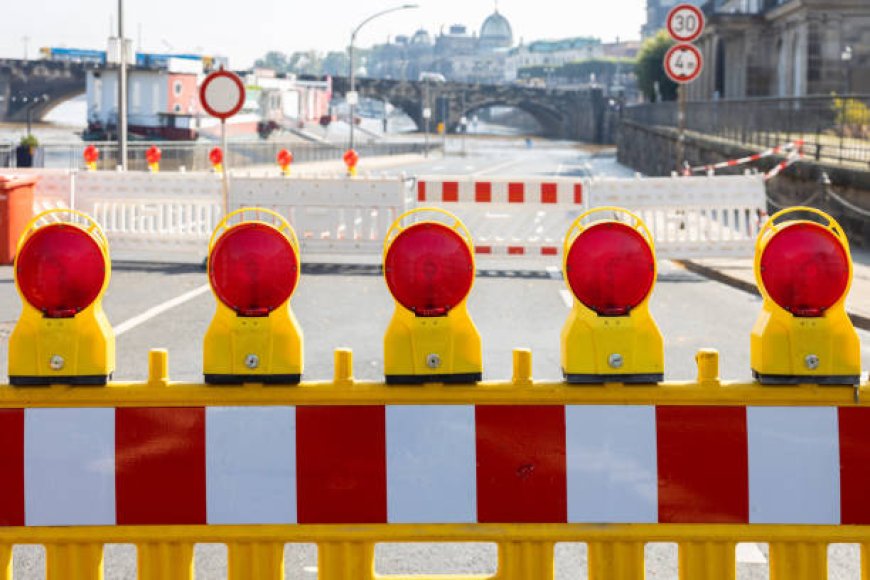How Do Caution Graphics Help Prevent Workplace Injuries?
Discover how visual safety cues like caution graphics reduce risks, raise awareness, and help prevent workplace injuries in high-risk job environments.

Every day, people across the United States go to work in factories, warehouses, construction sites, hospitals, and offices. No matter where someone works, safety must come first. Accidents can happen when people do not pay attention to danger or warnings. That is why caution graphics like bright signs with strong images play an essential role. These visuals grab attention quickly and help protect workers from harm.
Caution graphics are tools that speak without words. They use colour, shapes, and symbols to warn workers about slippery floors, hot surfaces, moving machines, or chemical spills. These signs are not there to decorate walls. They serve a serious purpose: to protect lives and prevent injuries before something bad happens.
Why Visual Warnings Work Better Than Words Alone
Imagine working in a noisy warehouse or a busy factory. There are loud machines, flashing lights, and people rushing everywhere. It’s easy to miss spoken words or long written instructions in such places. But a bright yellow triangle with a black lightning bolt can tell you instantly: “Watch out electric shock danger!”
This is what makes visual warnings so powerful. They break through distractions. They speak to everyone, even workers who may not read English well. Symbols are universal. They can be understood quickly by people of all ages and backgrounds. When every second counts, these signs can distinguish between staying safe and getting hurt.
The Psychology Behind Caution Graphics
Our brains respond quickly to strong visuals. Bright red means stop. Yellow means caution. Triangles and exclamation marks draw attention. These images alert our senses and make us pause. We don’t have to read a sentence or ask someone what it means. The message is right in front of us, loud and clear.
This natural reaction is why caution graphics are often placed where accidents are likely to happen. For example, near a wet floor, at a loading dock, or beside a hot pipe. Workers learn to connect these images with danger and act more carefully. When this happens often enough, safe habits start to form. Over time, these habits save lives.
Where Caution Graphics Matter Most
Workplace injuries can take many forms, including falls, cuts, burns, and machine crashes. Some of the most common injury spots are areas where people lift heavy items, use tools, or handle chemicals. In these spaces, caution graphics can serve as a constant reminder to stay alert.
For example, a sign showing someone slipping on water near a mop bucket helps prevent falls. A graphic showing a fire warns about flammable materials. At construction sites, a picture of a hard hat reminds workers to wear protective gear. These signs appear at just the right places—before the risk becomes harmful.
Helping New Workers Stay Safe from Day One
Many injuries happen to new workers who don’t know the rules yet. Maybe they’re unsure how to use a machine or didn’t hear a warning during training. This is where visual graphics can help a lot.
Clear and simple caution signs give new workers the help they need while they learn. These signs are quiet reminders, even when a supervisor is not nearby. A well-placed image does not forget. It does not get tired. It stays in place, warning every single person who walks past it.
This is one reason many companies across the USA now invest more in updated safety visuals. They want every worker to feel protected and confident in their space, no matter how new they are to the job.
Consistency Builds Safer Habits Over Time
One graphic may not change someone’s behaviour in a day. However, when workers repeatedly see the same message, it becomes part of how they think and work. Over time, they stop and check their surroundings, slow down near danger, or grab safety gear before starting a task. That’s the power of visual repetition.
Companies that use caution graphics wisely often see fewer injuries and stronger teamwork. Workers feel respected when their bosses care about keeping them safe. These signs also create a shared language at work—a way for everyone to look out for one another.
What Makes a Good Caution Graphic?
For a visual warning to work well, it must be simple, clear, and placed where people can see it right away. It must also use bold colors and meaningful symbols. A confusing or hidden sign won’t help anyone.
That’s why safety experts carefully study where injuries are most likely to happen and what kind of images get the fastest attention. They look at every detail from where the sign is placed to how bright the colors are under different lights.
For example, a caution image near a high ladder might show a person falling. The shape, color, and symbol need to match the risk. This is how smart design helps avoid real danger.
Real-Life Impact: A Safer Workplace for All
Many workplaces have made big changes in cities and small towns across the USA, thanks to better caution signs. One factory in Ohio reported a 25% drop in accidents after replacing all its old signs with newer, brighter graphics. Another warehouse in Texas said injuries from falling objects went down after they added more visual warnings near storage areas.
These real-life improvements show how powerful images can be. They are more than just decorations. They are tools that protect workers, reduce business costs, and show a company's care for its people.
Connecting Graphics with Training and Culture
While caution graphics do a lot independently, they work best when part of a bigger safety culture. This means workers also get proper training, and managers stay involved. When signs match what workers learn during training, the message gets stronger.
Employees also start to take ownership. They remind each other about safety and even report when a missing sign needs to be moved. This teamwork builds a safer space for everyone. A warning sign becomes more than just a picture—it becomes part of how the company works daily.
Why Caution Graphics Still Matter in a Digital World
Even with fancy software and digital alerts, simple visual graphics still matter. People don’t always wear devices. Power can go out, and screens can fail, but a printed sign with the right colors and symbols keeps working.
This is where safety signs and symbolism make a lasting impact. They bring safety to life in ways that technology alone cannot. Whether on a factory floor, in a school science lab, or at a roadside work zone, people trust these signs to guide them away from harm.
Even a basic hazard sign in the right spot can stop an accident before it starts.
Final Thoughts: Small Signs, Big Impact
Caution graphics may look small, but their power is big. They speak fast, work quietly, and protect people without needing batteries or power cords. They help workers stay alert and aware in places where one mistake could change everything.
Companies across the United States can keep their teams safe by using strong visuals and placing them where they matter most. These graphics remind us that safety is everyone’s job, and that simple actions like reading a sign can save a life.





































